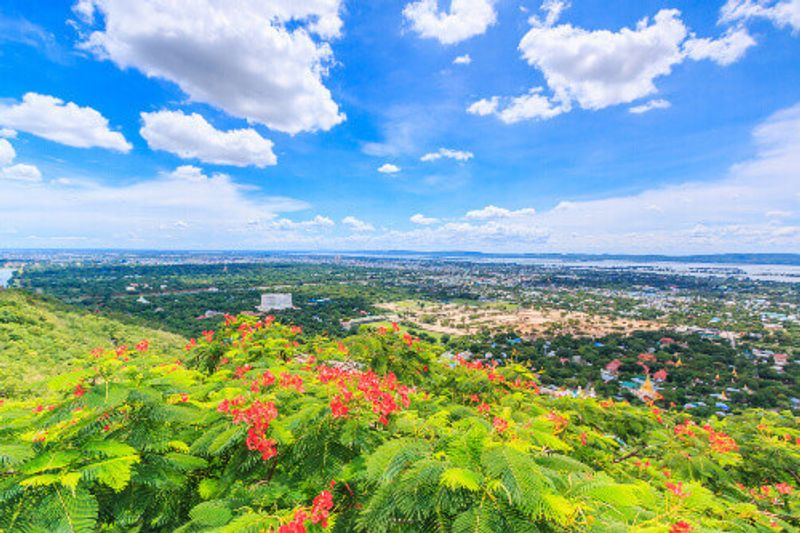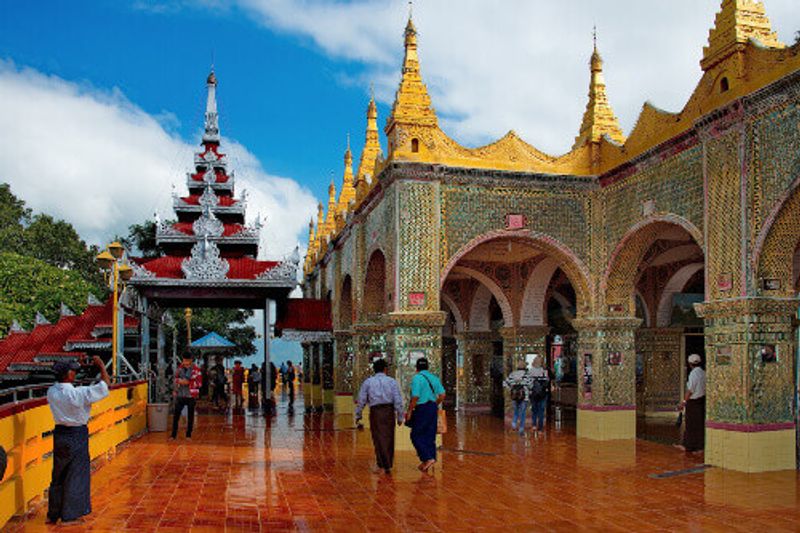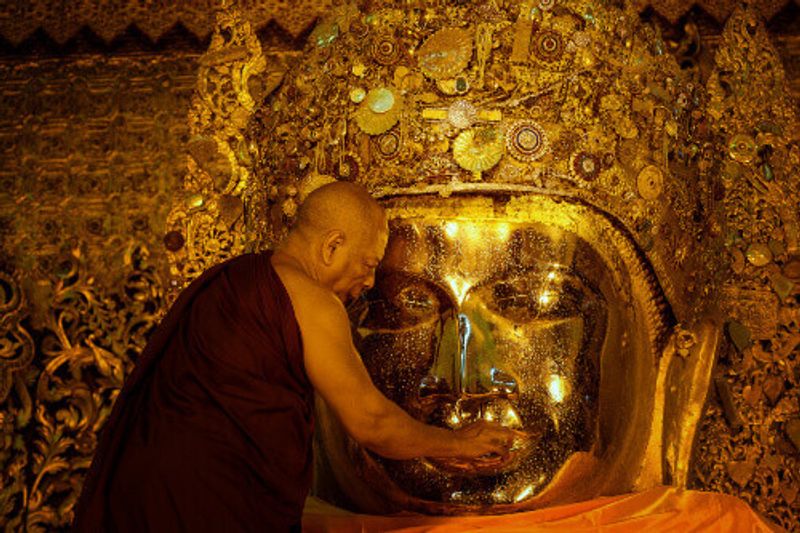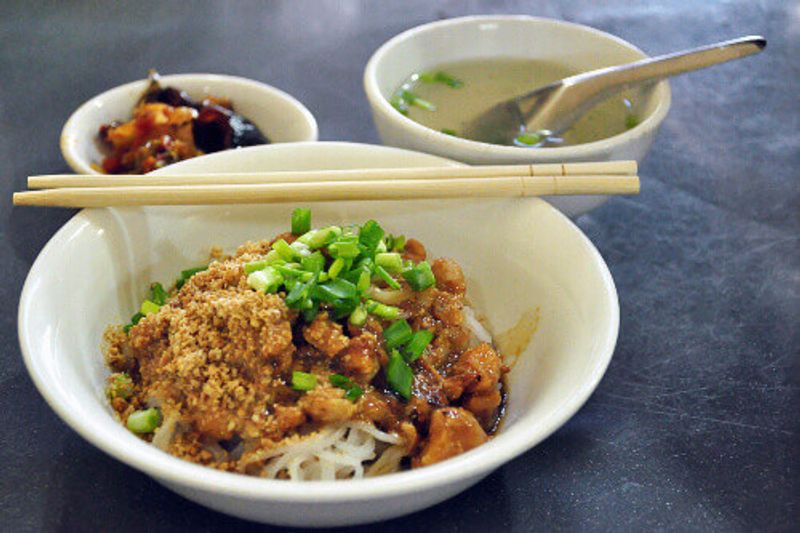The former royal capital is full of history, culture, and glorious street food
Mandalay conjures images of the last era of Burmese royal history, as it was the country’s final royal capital before the British took over and made Yangon (or Rangoon) the new capital in 1885. The city’s namesake is the majestic form of Mandalay Hill, a must-visit cultural destination and pilgrimage for many Buddhists – it’s also the home to several Buddhist convents and monasteries.
Many come to see the Sutaungpyei pagoda and its incredible views of the surrounding country. The hill is linked to old legends and folktales, including one of an ancient ogress, Sandha Mukkhi, who was eventually reincarnated as King Mindon of Burma.
Things to do
There’s no shortage of pagodas and temples here, as well as unique architecture, bustling markets, and if you have the time to spare, waterfalls. Most visitors take to Mandalay Hill – it is, after all, a focal point of the city – it’s been modernised with an escalator, but you’ll still have to do a lot of good old-fashioned walking to get to the top. Don’t be surprised if young monks and students seize the opportunity to practice their English conversation skills with you – you just might learn a thing or two about their homeland from them.
For a less challenging stroll, take a turn around the U Bein Bridge, the world’s once-longest teak bridge that curls around the Taungthaman Lake. Built in 1851, the bridge has been partially reinforced with concrete and other modern updates, and offers a peaceful escape to soak up the surrounding lake and landscape.
Visit a traditional teak monastery – Shwenandaw Kyaung Monastery (or the Golden Palace) has a rich history that originates in the old royal capital of Amarpura. The monastery was disassembled and rebuilt for King Mindon, and eventually moved a third time where it became a monastery. There’s also Bagaya Monastery in Ava (sometimes called Inwa), which was Myanmar’s ancient capital from the 14th to the 19th century. There are plenty of opportunities to watch fascinating, intimate Buddhist rituals at temples and pagodas, such as cleaning sacred statues with the use of thanaka, a special bark powder that is turned into a paste by adding water. The Buddha statue at Maha Myat Muni pagoda even gets his teeth cleaned with sandalwood.
Things to eat
Tea is a big part of life in Myanmar, and Mandalay offers delightful tea shops and tea rooms that showcase the country’s favourite brews and snacks. And like many other Southeast Asian countries, street food is king – don’t miss out on chomping your way through 63rd Street, where you can really see the regional influences of Chinese, Thai, and Indian cuisines. Try a handful of pork skewers, bow see (steamed buns), or the Shan variant of tofu made with pea flour. Grab a bowl of Shan noodles, which are readily available around the city, which pack a tangy punch (yes, there’s cilantro). Be prepared to sit streetside, as is the custom, on stools and a tiny 'table' to enjoy your meal.



